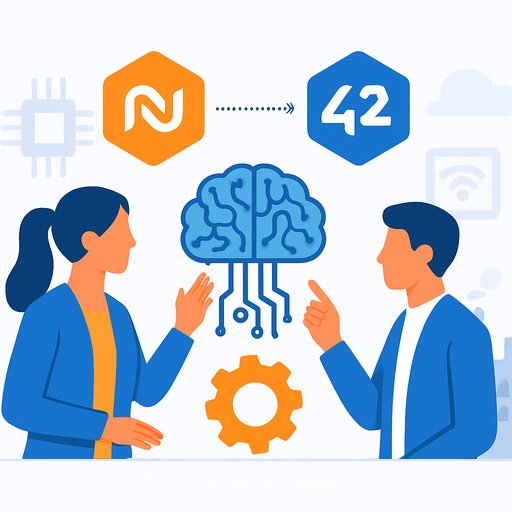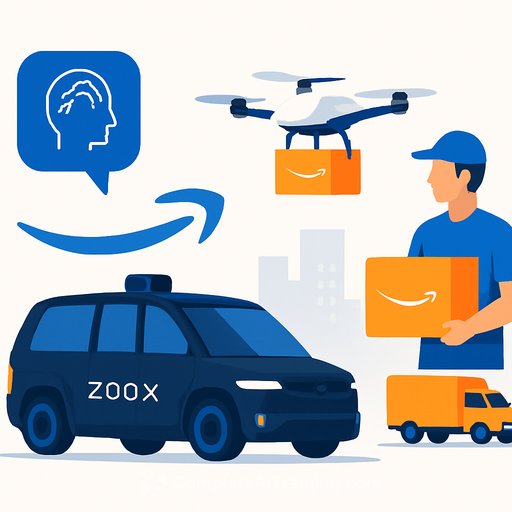The AI bubble debate misses the point: chatbots are the light-bulb stage
Billions are being spent on AI with a 95% failure rate. That's not a cliff; it's a signal. We're swapping gas lamps for light bulbs and wondering why the factory runs the same.
Chatbots make work brighter and slightly faster. The real change starts when we rebuild workflows and systems around AI that does meaningful work, not just answers questions.
The light-bulb stage: why chatbots underdeliver
Many teams rolled out assistants to draft emails, summarize docs, and surface insights. They shaved minutes off tasks, then hit a wall. Productivity nudges aren't a moat, and they rarely move core business metrics.
A June McKinsey survey found most companies see little bottom-line impact from AI. The promise is clear; the payoff isn't-because most efforts are still UI-deep.
Source: McKinsey State of AI
The three stages of AI adoption (product view)
- Stage 1 - Panic: "Get our data in order and ship something AI." Output: demos, pilots, scattered tools.
- Stage 2 - Interface: "Give me a chatbot to ask questions and automate small tasks." Output: convenience, low strategic impact.
- Stage 3 - Work: "Integrate AI with systems to execute end-to-end tasks under SLAs." Output: faster cycle times, lower unit costs, new operating models.
What Stage 3 looks like for product teams
- System-integrated agents: Read/write access to CRM, ERP, PLM, code repos, and data lakes via secure APIs.
- Work execution: Multi-step workflows (plan, decide, act) with approvals and audit trails.
- Guardrails: Policy checks, data scoping, identity, monitoring, rollback, and test suites for prompts and functions.
- Reliability: SLAs, fallbacks, human-in-the-loop, and measurable service quality.
Boring is beautiful: target the unsexy work
Chase the tasks everyone avoids but the business depends on. Kill the ones you don't need. Automate the ones you do.
- Product/Engineering: PRD-to-test generation, dependency risk scans, spec diffing, release notes, incident triage, log summarization, flaky test isolation.
- Operations: Contract extraction, policy compliance checks, KYC/AML review, claims pre-assessment, invoice matching, ticket routing.
- Supply & Procurement: Vendor onboarding, RFx drafting, quote normalization, delivery risk flags, inventory reorder suggestions.
- Finance & GTM: Close checklists, variance explanations, pricing change simulations, lead enrichment, churn risk notes.
Define use cases that change how work gets done
A faster report is nice. A shorter cash-conversion cycle is a strategy. Focus on flows that move money, risk, or time.
- Examples: Deal desk approvals, procurement cycle, claims adjudication, production scheduling, L1 support resolution, fraud review queues.
- Design principle: Replace steps, not just speed them up. Aim for "submit → decision → action" with one interface.
Redefine success metrics (hard + soft)
- Hard KPIs: Cycle time (hours → minutes), cost per transaction, first-pass yield, SLA attainment, backlog burn-down, tickets per FTE, defects escaped.
- Decision quality: Error rate, override rate, audit findings, policy adherence.
- Adoption: Weekly active users, tasks per user, time-to-value (days to first automated outcome).
- Business impact: Throughput, revenue lift from faster decisions, working capital impact, CX metrics tied to response time.
90-day product playbook
- Weeks 1-2: Inventory high-volume tasks; score by volume x latency cost x error cost. Baseline metrics. Lock data access and policy gates.
- Weeks 3-4: Wire RAG to governed sources. Define function calls to systems of record. Draft guardrails and evaluation harness.
- Weeks 5-8: Ship 2-3 stage-3 use cases. Include approvals, logging, and rollback. Measure cycle time and accuracy vs. baseline.
- Weeks 9-12: Expand to adjacent steps. Harden SLAs. Publish playbook and ROI. Decide build/borrow/partner for scale.
Reference blueprint
- Interface: Workflow UI or chat with buttons for structured inputs and approvals.
- Orchestration: Tools/functions for retrieval, planning, calling services, and validation.
- Data: RAG over curated sources; PII scoping; vector + keyword; caching.
- Governance: Identity, policy, prompt versioning, offline tests, real-time monitoring, red-teaming.
Common pitfalls
- Vanity prototypes: No system writes, no metrics, no impact.
- Messy data first: Perfect data is not required. Scope to clean slices and expand.
- One-model thinking: Use specialized models per task; evaluate, don't assume.
- No change management: Update SOPs, roles, and incentives or adoption stalls.
What to do Monday
- Pick one flow that hurts: high volume, measurable, policy-bound.
- Define "done": SLA target, error bound, approval logic, audit trail.
- Give the agent write access under strict scopes. Measure weekly. Expand only after impact is proven.
The takeaway
Chatbots are the light bulb-useful, visible, and shallow. The edge comes from rebuilding how work happens so AI executes steps, not just talks about them.
Ship the boring things that print outcomes. Measure what matters. Then scale with intent.
See AI courses for product roles
Your membership also unlocks:






